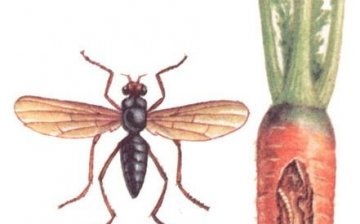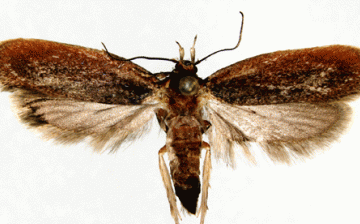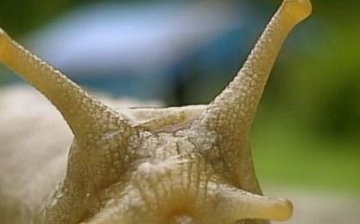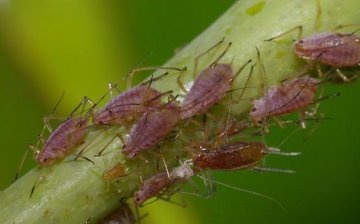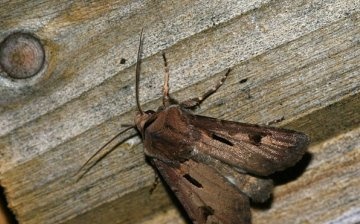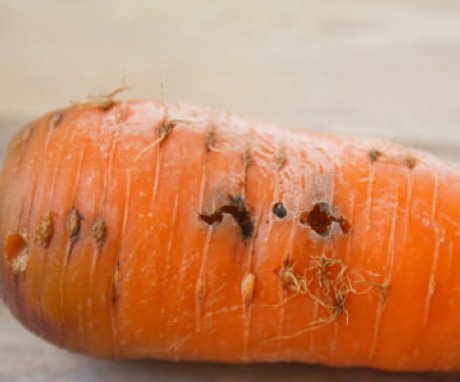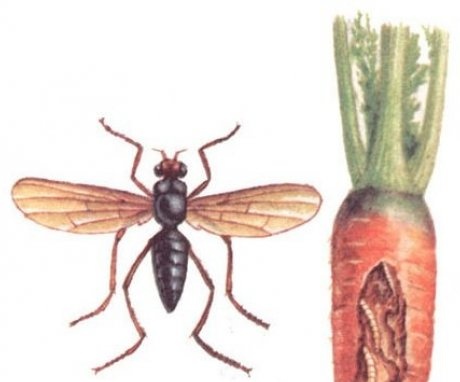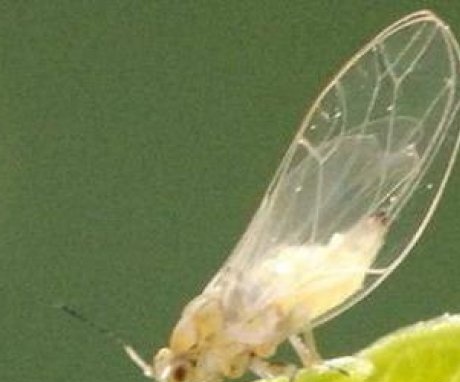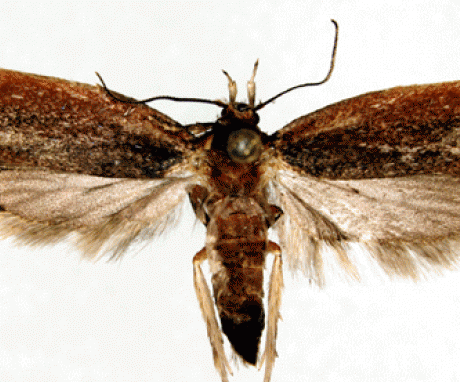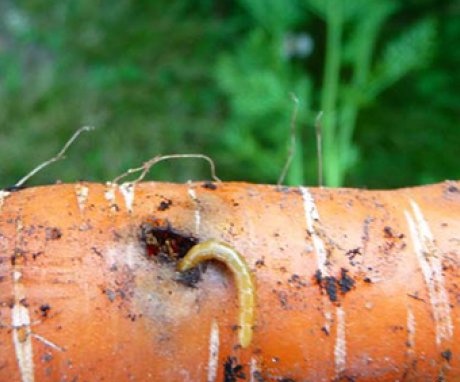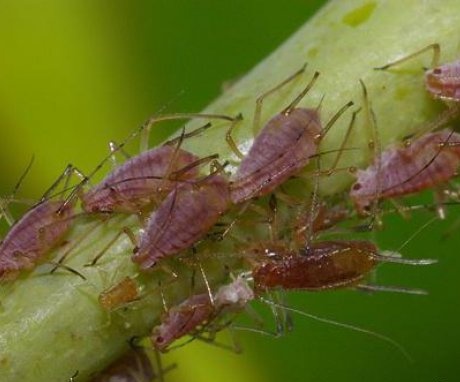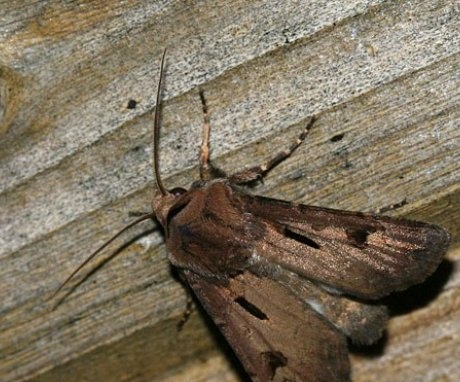Carrot pests - types, control and prevention
Strong, juicy and large carrots are every gardener's dream. It is quite difficult to grow a crop without the slightest damage and defeat. During the growth period of a juicy treat, an attack may occur pests... There is no escape from them, the gardener needs to be careful and monitor the carrots. At the first signs of the appearance of pests, urgent measures should be taken to save the valuable crop. This quick guide to carrot pest control will be the gardener's assistant and companion in the fight against the enemy.
Content:
- Pests of carrots, their types
- Carrot fly
- Beetle leaf
- Umbrella moth
- Naked slugs
- Wireworms
- Carrot aphid
- Exclamation scoop
Pests of carrots, their types
Have carrots enough pests... Many people want to eat root crops and leaves. The most frequent guest in the garden is the carrot fly. It is difficult to expel or destroy it. Fly eggs are in the soil, so even chemicals won't take them. The second place in the defeat of the root crop is occupied by the lice. It usually appears in those gardens where pine or spruce grows. In hot weather, it is especially active.
The umbrella moth gnaws at young roots and stems. It is especially dangerous in July. Naked slugs are also a crop threat. They damage the root crop, leaving impressive furrows in it with a characteristic white-silver bloom. Wireworms operate on the same principle. The reddish delicacy is especially to their taste.
Carrot aphids are becoming a real disaster.
It not only damages the leaves of the root vegetable, but also brings diseases with it. The exclamation scoop is a caterpillar that gnaws at the root vegetable and stems, leaving a deformed fruit behind. There are various subtypes of aphids, the methods of dealing with them do not differ from those used for carrot aphids.
All of these types of parasites require more careful consideration. The gardener needs to know how to deal with the enemy, preventive measures will help prevent its appearance.
Carrot fly
This malicious pest appears around the end of May. It is a fly that lays eggs in the soil near the root crop. The larvae feed on the pulp carrots, leaving behind passages and tunnels. Carrots acquire a bitter taste, and putrefactive formations make the root crop completely unsuitable for consumption. The first signs of an enemy are reddish-purple spots on the leaves. Unfortunately, it is very difficult to remove the parasite. The larvae are found in the soil. Chemicals will not help; they will not be able to "get" the main culprit.
Popular methods of struggle will partially help to cope. Experienced gardeners advise the use of the following products:
A mixture of ash and tobacco dust is scattered through the rows of carrots. Then it needs to be loosened and covered again. The presence of marigolds, onions and cilantro effectively repels the fly. Recommended grow carrots near these plants. Another good advice gardeners give is not to leave clipped carrot foliage in the aisles. The smell of the plant's essential oil attracts the parasite.
The main fight against the pest is prevention.
This is the only way to protect the crop from adversity. Follow the rules crop rotation, constantly loosen the soil, thin out the seedlings in time, sow marigolds around the perimeter of the beds, use summer mulch consisting of a leaf tomato... When loosening the soil, compact it at the very base of the stem. If the fly was in control last year, cover the current crop with a dense nonwoven. Dig deep into the ground in the fall, remove all plant debris and weeds.
The lice is a small insect that lays the larvae in the soil. Both mom and kids harm carrots. They suck out the sap of the plant, which leads to a change in the shape of the root crop. If there are conifers in the garden or nearby, the risk of this pest increases. As a result, carrots begin to curl. The fruit is tasteless and firm.
The first sign of a parasite is the curled leaves of the carrot.
There are several chemical drugs, capable of scaring off the leaf beetle: "Intavir", "Antellik", "Iskra" and "Fitoverm". The soil and leaves are cultivated twice a season - early May and June. If a coniferous tree grows in the garden, it is necessary to treat it with Karbaphos solution.
Traditional methods include the use of the following components:
- Tobacco leaves
- Ash
The tobacco is infused in water for a day. Rows of carrots are sprinkled with ashes. Then from above sprayed the resulting tobacco solution. The most reliable means of exterminating an insect is prevention.
It includes the isolation of crops from conifers and wild carrots. They are the ones who are responsible for the appearance pest... It is necessary to follow the rules of crop rotation, loosen the soil, treat it with chemicals to prevent the appearance of insects, and in the fall carry out deep plowing of the area intended for carrots. Seeds it is advisable to soak the root crop in a manganese solution.
Umbrella moth
The pest is a small butterfly that lays eggs. A brown caterpillar is considered dangerous. It affects the testes of carrots and the root crop itself.
It is easy to see this guest, she weaves the testes, something like cocoons appear. The vegetation darkens and dries up. The peak of the pest infestation is considered to be the period from the end of June to the second half of July. They later turn into pupae and pose no threat.
Control measures with the help of drugs are reduced to treating the plant with lepidocide, dendrobacillin and entobacterin.
Solutions are diluted in accordance with the manufacturer's instructions. Rather mechanical processing carrots. It is necessary to cut off the tops of the affected plants, collect the caterpillars and destroy along with the collected umbrellas. In the fall, the land must be plowed deeply.
Naked slugs
Hairless slugs are oblong, slimy, worm-like molluscs that lay eggs. The offspring appears after two weeks. The slug affects everything that it comes across: foliage, root crops, testes. Mostly the pest hides under leaves, stones, lumps of earth during the day. Loves wet, damp places. Slug infestation prevails in rainy weather. The mollusk leaves behind an eloquent whitish slimy trail, so it is very easy to identify its leprosy.
Experienced gardeners recommend fighting naked slugs by spraying the plant with vitriol, superphosphate or potassium salt.
Solutions are diluted according to the instructions on the package. A sprinkling of slaked lime will also work well. The use of metaldehyde in granules is advised. The product is in great demand among gardeners, it has proven to be effective against naked slugs.
There is one interesting popular method of dealing with a pest. It consists in making a tincture of paprika. The concentrate is diluted with water and soap shavings are added.The mollusk instantly leaves its favorite places. Pest control must be carried out at night. It is active at this particular time of day.
Slug prevention is very simple. It is enough to weed the beds in time and not leave heaps of tops, weeds near the beds. This can be a great slug home. Watch the airing of the soil, do not allow the appearance of stagnation of water in the beds.
The wireworm is the brainchild of click beetles. It is a yellowish small resilient worm, mercilessly eating the carrot root crop. Beetles lay their eggs at the end of May, after a couple of weeks the larvae appear. Recognize the pest by withered foliage, it dries up. The fruit is affected, which immediately reacts to the plant tops.
Pest control methods can be carried out from two fronts: with the help of drugs and folk remedies.
- For tillage use "Bazudin", "Aktara" and "Etonem-F".
- The best remedy is to dig up the earth with the addition of ammonium sulfate. But this is being done in the fall.
- During the growing season, the soil is fertilized with ammonia preparations.
- The use of lime is considered effective; it is sprinkled on the ground between the rows of root crops.
Popular methods include the fight against the pest with the help of baits. This method is akin to hunting an animal. Pieces of potatoes, beets, carrots soaked in insecticides are buried in the ground. Many do not use them. Sticks are inserted into the pieces of treats. Then you need to wait a few days. Then the bait is taken out of the ground along with the wireworms. The pest is destroyed.
The more often you set traps, the more efficiently you will collect parasites.
Preventive measures include deep digging of the soil in early autumn. Wireworm larvae are easy to spot. They are collected and burned. Ammonium nitrate preparations are added to the soil.
Carrot aphid
Gardeners often see it as a cluster of green small insects. They have small black antennae and a translucent greenish body. There are wingless and winged types of aphids. Both are dangerous. They suck out the juice of the stems, the root crop slows down in development. As a result, the yield of carrots decreases. See pest easily, it accumulates in large quantities at the foot of the stems. The leaves curl up and then dry out.
Since aphids appear mainly in the heat, it is necessary to constantly produce spraying carrots with plain water.
It is she who is the enemy of the pest. Gardeners recommend using a soapy caracine spray solution. Ordinary soapy water will do. Nicotine sulfate has proven itself well.
Ash and tobacco infusion are used as folk remedies. They repel aphids well marigoldplanted near the beds. Infusions of any phytoncidal plants have proven themselves. These include henbane, onion, pepper, garlic, potatoes and others. As a preventive measure in hot weather, it is necessary to spray the culture with water as often as possible. In the fall, deep digging of the soil is done with the destruction of weeds. Timely soil loosening is recommended during the growing season.
Exclamation scoop
Another name for the pest is the winter scoop. Butterfly caterpillars are especially dangerous. They are distinguished by the black stripe on the back. Pest feeds on the stems, their pre-root part, and also destroys the pulp of the root crop. Leaves passages and tunnels behind. Yield carrots decreases as a result of the appearance of a caterpillar.
The fight against the pest is carried out by:
- With the use of various insecticidal preparations. Spraying is carried out with microbiological preparations such as "Decis", "Politrin", "Fury".
- Traditional methods of struggle are reduced to spraying plants with chamomile and burdock infusion. The close proximity of these plants scares away the butterfly well. Gardeners are advised to release insects - trichograms. They deal effectively with the caterpillar.
Preventive measures include autumn plowing of the soil, careful destruction of weeds both during the growing season and during tillage in the fall.
Pest control often comes down to preventive measures. Continuous crop care, loosening, soil cultivation fertilizers and observance of the rules of crop rotation contribute to a good harvest of carrots.
Remember to decontaminate any seeds before sowing.
Don't overdo it with nitrogen fertilizers. This can provoke the appearance of diseases and pests of carrots. Use phosphorus-potassium fertilizers, they will increase the yield of all your favorite juicy carrots.
More information can be found in the video.





